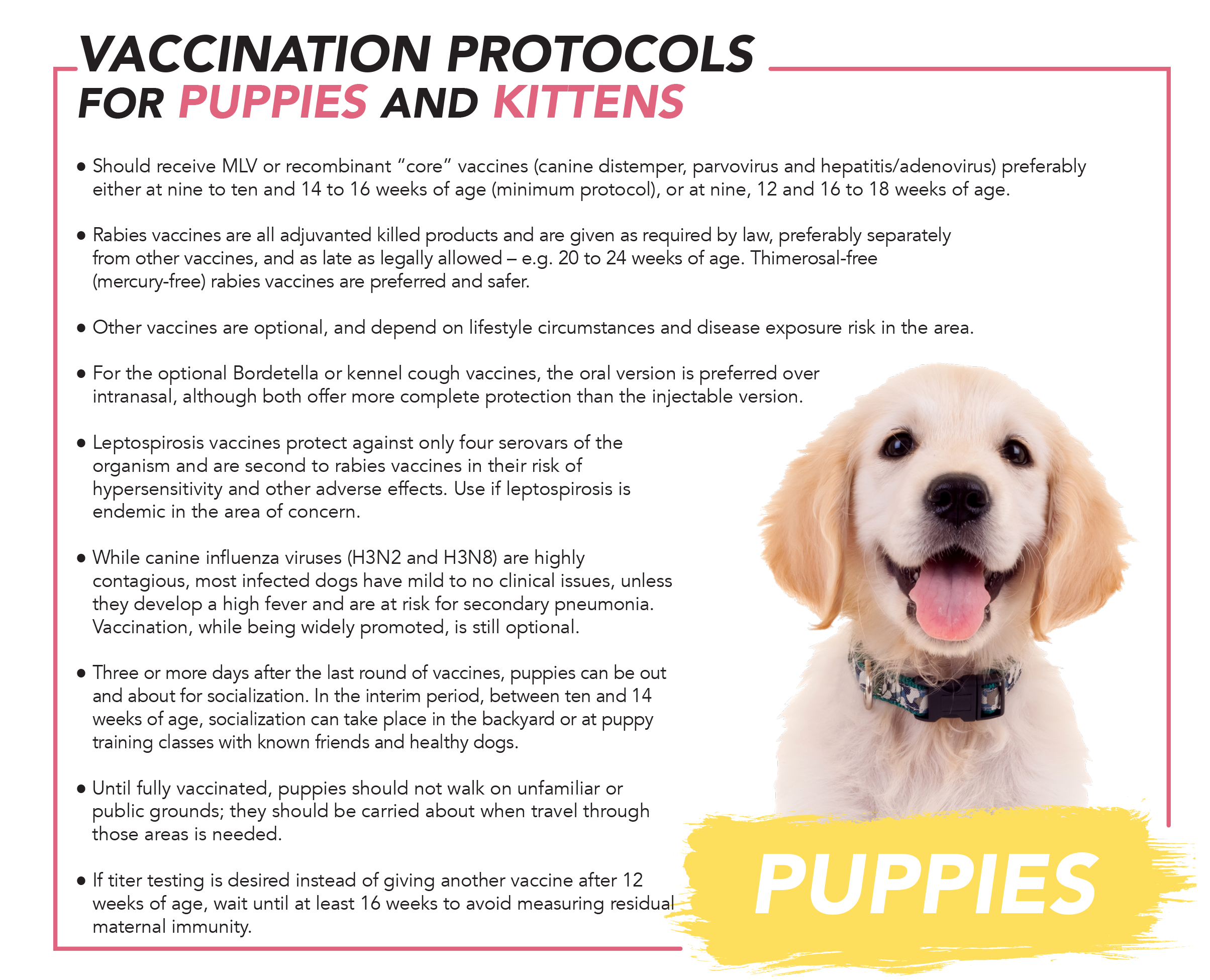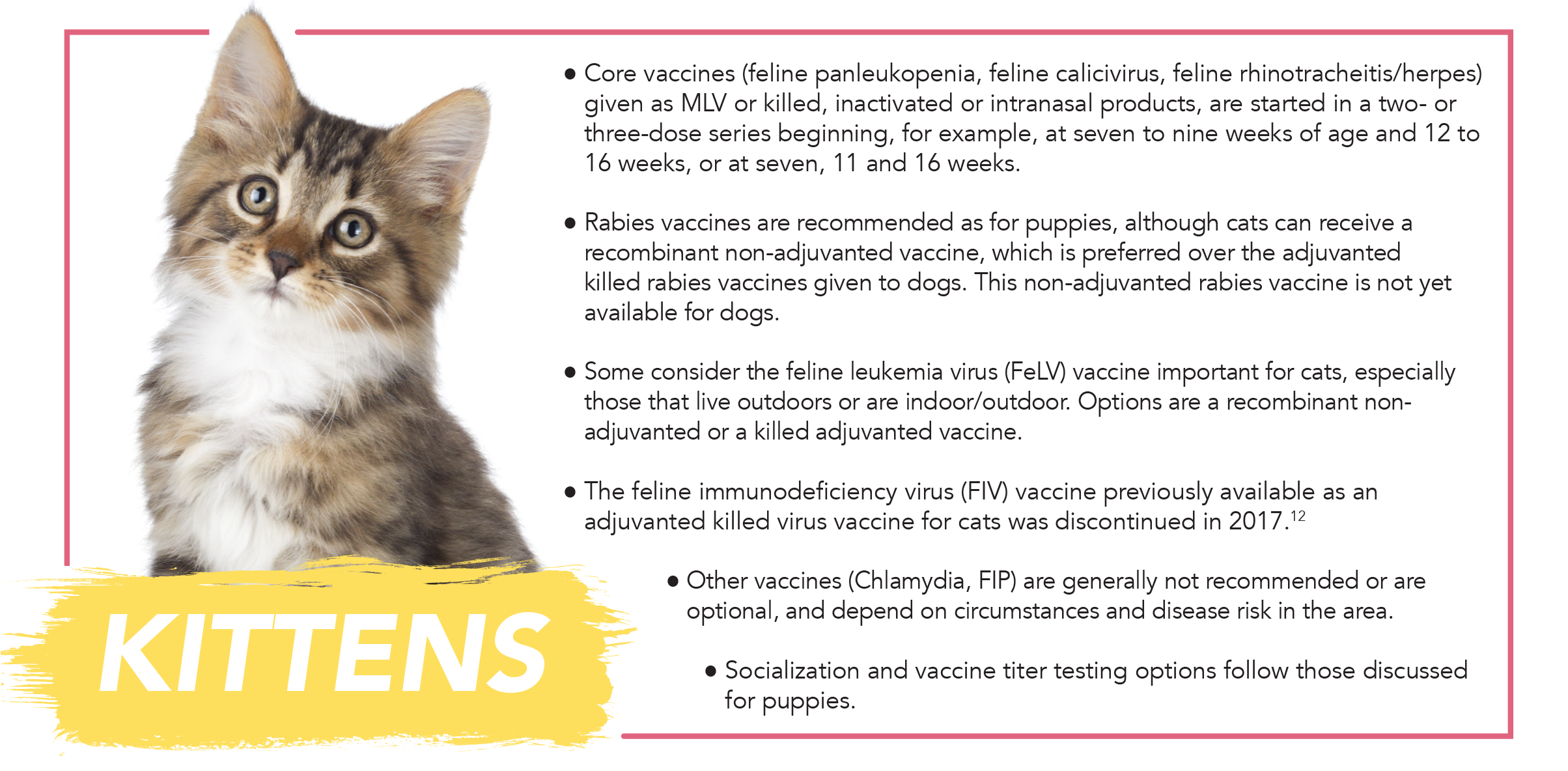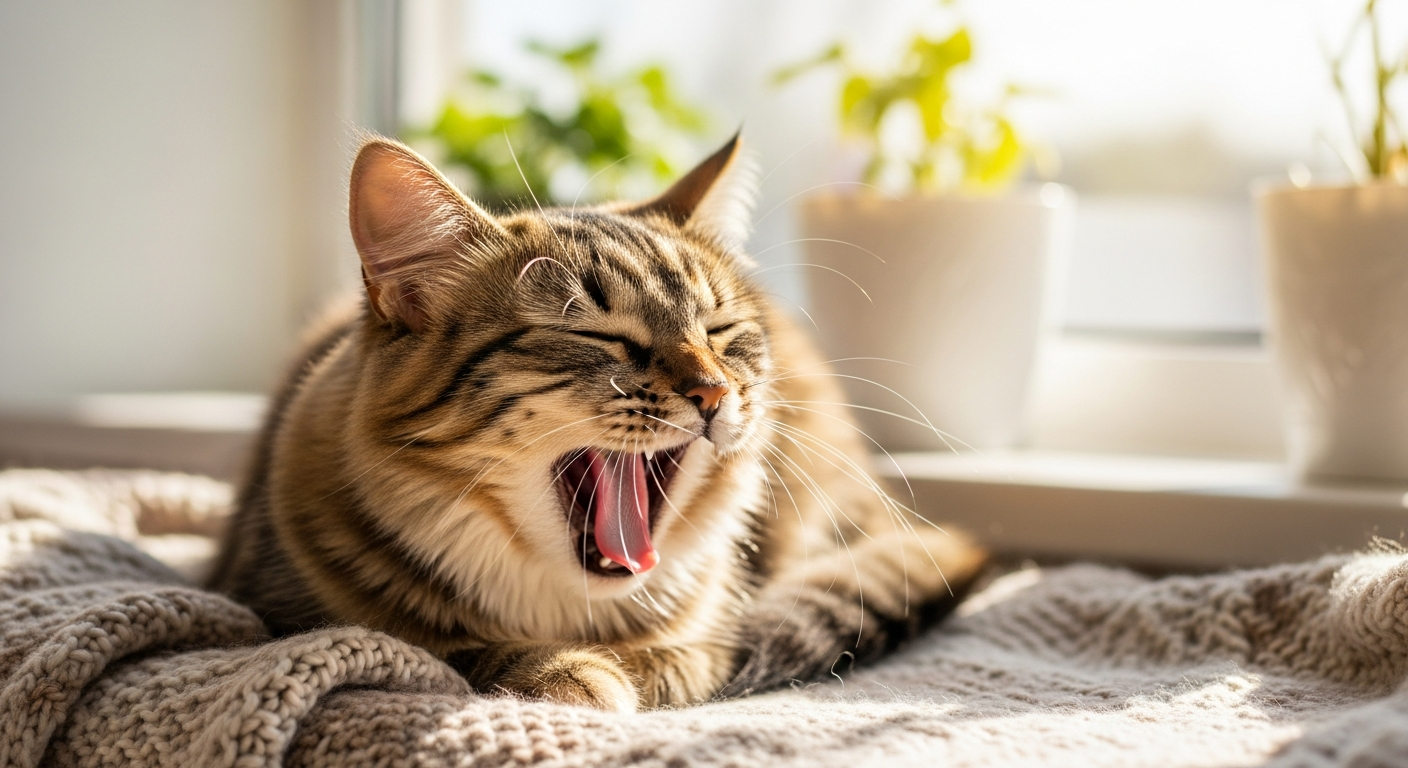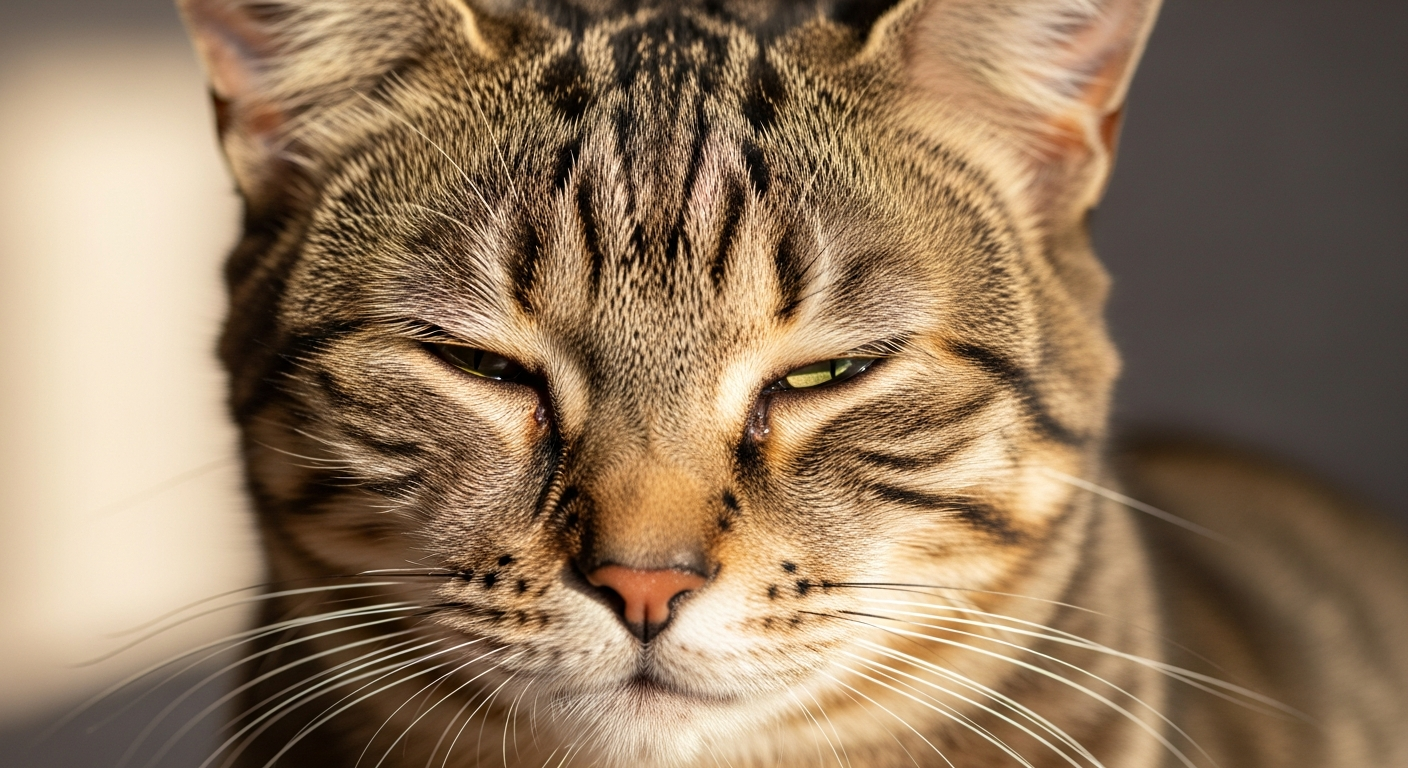While vaccines are needed to protect against infectious disease, they are not innocuous products and can cause adverse reactions and contribute to other diseases. When it comes to vaccinating puppies and kittens, the timing and benefits/risks need to be carefully assessed.
A year ago, I wrote an article on vaccination protocols for pets in midlife (“Vaccination in Adult Dogs and Cats,” IVC Journal, Fall 2020). As a follow-up, I will now look at vaccination considerations for puppies and kittens, using a proactive pediatric approach that ensures vaccination safety and efficacy in these young animals. This is especially important given the residual maternal immunity that may interfere with vaccines and prevent successful immunization. Addressing this issue is hampered, however, by an ongoing misunderstanding of the principles of immune memory and protection; the fact that pet caregivers and breeders often give their own vaccines; and that they often choose to do so at a very early age, even at four weeks, when it is unsafe. Vaccine labels state that these MLV vaccines should not be given before six weeks of age as they can induce a mild case of vaccine-induced viral infection. Further, vaccines contain other excipients such as fetal calf serum or egg albumin, immune stimulators, and tissue culture remnants. More focused educational efforts are clearly needed within academic veterinary medicine, clinical practice, and companion animal breeders and pet parents. Vaccines are not innocuous products, so the timing and benefits/risks need to be assessed carefully before vaccinating puppies and kittens. Vaccines should be thought of as medications, and used as necessary to accomplish the true health needs of the recipients.
 VACCINE-ASSOCIATED SIDE EFFECTS AND DISEASES
VACCINE-ASSOCIATED SIDE EFFECTS AND DISEASES
While modern vaccine technology has permitted us to effectively protect companion animals (and people) against serious infectious diseases, vaccinations are increasingly recognized, in genetically predisposed individuals, as causing immune-mediated blood, skin, bowel, bone, and joint diseases; bone marrow and organ failure; central nervous system excitation; and behavioral aberrations.1-6 These adverse events (termed vaccinosis) are relatively rare, with estimates at three to five events per 100 vaccines given.3
In cats, while adverse vaccine reactions may be less common than in dogs, aggressive tumors (fibrosarcomas) can occasionally arise at the site of vaccination, as they can in dogs.7-9 Their prevalence over the last 20 years has not decreased, nor has the age of affected cats increased, despite changes in vaccine formulations and worldwide protocol guidelines.9 Other cancers such as leukemia have also been vaccine-associated.9
Today, only about 40% of veterinarians are estimated to be following the current World Small Animal Veterinary Association, American Veterinary Medical Association, American Animal Hospital Association, and British Veterinary Association vaccine policy guidelines.3 As published data shows more adverse reactions when multiple vaccines are administered at the same time, separated vaccine components are now available to offer a staggered approach to safer immunization, especially in the young puppy or kitten.
 VACCINE DOSAGE
VACCINE DOSAGE
Dogs, no matter what the size or breed type, are currently vaccinated with the same quantity of vaccine.1,2 This makes little immunological sense, particularly when the manufacturer’s clinical trials are typically performed on laboratory beagles and with minimal field testing in different breed types prior to licensing.3 More vaccine adverse events have been documented in smaller dogs.2 Toy and smaller dogs should require less vaccine than giant and large dogs to achieve full immunization, and puppies and kittens should require less vaccine volume than adults.1 This author studied healthy, adult, small breed dogs that had not been vaccinated for at least three years.10 They were given a half-dose of bivalent distemper and parvovirus vaccine, and all the dogs developed increased and sustained serum vaccine antibody titers.10 This approach should apply also to puppies, and perhaps kittens, although they have less size disparity than puppies.
ALTERNATIVES TO CURRENT PET VACCINE PRACTICES
When an adequate immune memory has been established by measuring serum antibody titers, it would be unwise to introduce unnecessary antigen, adjuvant, and other excipients, as well as preservatives, by administering more vaccine boosters.3-5 For legally required rabies vaccines, however, alternative options are often limited by necessity, given the exposure risk to this fatal disease.11
OTHER ISSUES WITH OVER-VACCINATION
The increased cost in time and dollars needs to be considered, despite the justified solicitation of clients, so that pets receive a wellness examination.1,3 Giving unnecessary boosters also increases the risk of adverse reactions from the repeated exposure to foreign substances.1-4
While some veterinarians may tell their clients there is little scientific evidence linking vaccinations with adverse effects and serious illness, this confuses an impressionable client.3 On the other hand, polarized views by vaccine naysayers just add more confusion. The current controversies and misinformation surrounding the exposure risk of SARS-CoV-2 and COVID-19 disease and its vaccination is a potent example.
Vaccination immune responses are similar in duration to those following a natural infection. Adaptive immunity to viruses develops earliest and is highly effective, whereas the adaptive immune response to bacteria, fungi or parasites develops more slowly, and the duration of immunity (DOI) is generally shorter than with most systemic viral infections. While older dogs and cats rarely die from vaccine-preventable infectious disease, especially when they have been vaccinated and immunized, young animals do die, mainly because vaccines were either not given or given at an inappropriate age (e.g. too early in life in the presence of maternally derived antibody.)1-3
Vaccinating puppies and kittens should involve a careful assessment of the benefits and risks of vaccines to young animals. Determining the right ages at which to administer these vaccines must also be considered. See the sidebars above for optimal vaccination protocols for puppies and kittens.
1 Day M J, Horzinek MC, Schultz R D, Squires R. WSAVA Guidelines for the vaccination of dogs and cats. J Sm Anim Pract 2016; 57: E1-E45.
2 American Animal Hospital Association (AAHA). Canine Vaccination Task Force: Ford RB, Larson LJ, Schultz RD, Welborn LV. 2017 AAHA canine vaccination guidelines. J Am Anim Hosp Assoc 2017; October: 26-35.
3 Dodds WJ. Vaccine issues and the World Small Animal Veterinary Association (WSAVA) Guidelines (2015-2017). Israel J Vet Med 2018; 73 (2): 3-10.
4 Dodds WJ, Herman K. Heavy Metals in vaccines. J Am Hol Vet Med Assoc 2019; 57: Winter 16-18.
5 Dodds WJ. Adjuvants and additives in human and animal vaccines. Med Res Arch. 2016; 2(5): 1-8.
6 Dodds WJ. Rabies virus protection issues and therapy. Global Vaccines Immunol. 2016; 1: 51-54.
7 Schultz RD, Thiel B, Mukhtar E, Sharp P, Larson LJ. Age and long-term protective immunity in dogs and cats. J Comp Pathol. 2010; Jan;142 Suppl 1: S102-8.
8 Scherk MA (Chair), et al. 2013 AAFP Feline Vaccination Advisory Panel Report. J Fel Med Surg 2013; 15:785-808.
9 Wilcock B, Wilcock A, Bottoms K. Brief communication. Feline postvaccinal sarcoma: 20 years later. Can Vet J 2012; 53: 430-434.
10 Dodds WJ. Efficacy of a half-dose canine parvovirus and distemper vaccine in small adult dogs: a pilot study. J Am Hol Vet Med Assoc 2015; 41:12-21.
11 Dodds WJ, Larson LJ, Christin, KL, Schultz RD. Duration of immunity after rabies vaccination in dogs: The Rabies Challenge Fund research study. Can J Vet Res 2020; 84:153–158.
12 Stilwell N. What Is FIV and why Is the FIV vaccine no longer available? PetMD. July 9, 2020. https://www.petmd.com/cat/care/what-fiv-and-why-fiv-vaccine-no-longer-available







